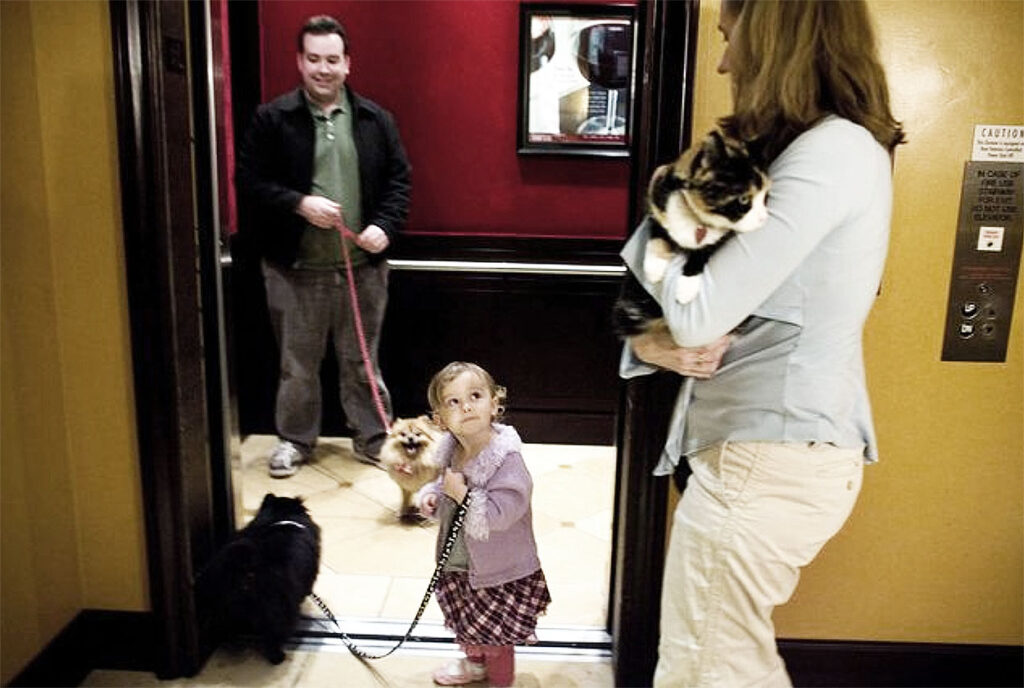Highrise Pet Ownership
By Alex Zhvanetskiy, Vice President of Samsonshield Inc.
Both Samsonshield and Riskboss routinely get calls asking for advice and opinion on how to deal with pet issues in highrise buildings. Calls for information have been on the increase since the COVID19 Pandemic began as more people are working from home. No highrise community is immune to such issues.
Highrise pet issues are not only predictable, but are always preventable
Most pet owners are responsible people who genuinely care about how their pets interact with other pets and residents. There are; however, pet owners in every highrise community that simply don’t get it causing anxiety, bad feelings and frustration for everyone. The keeping of pets in residential buildings is subject to provincial and municipal laws, and also condominium bylaws and building rules where applicable.
Knowing the law and how to handle pets in a condominium community not only assists pet owners to enhance the quality of life of their pets, but also will greatly reduce the likelihood of unfortunate incidents that may impact the community leading to unintended consequences.
Provincial and local laws (such as is found in the City of Toronto Municipal Code) are the guiding direction surrounding pets within the boundaries of highrise communities. Building rules must be in keeping with such local and provincial laws; however, condominium corporations may, by way of powers in the Condominium Act, impose stricter rules binding their communities.
Some of the causes for calls for enforcement with respect to pets include, but are not limited to, the following.
- Noise caused by animals
- Pet excrement & unsanitary conditions
- Pets at large (Not tethered or properly restrained)
- Pet lunging, biting & aggressive incidents
- Exceeding the maximum number of pets in units
- Unregistered pets & guest pets
- Prohibited animals being kept as pets
- Building rules regarding pet enforcement
- Cruelty, neglect and abuse of animals, Especially in hoarding cases of extreme neglect
- Injured or obviously sick pets
Aggressive and unrestrained dogs make up a large percentage of complaints. Certain circumstances are managed through an Ontario law entitled, “The Dog Owners’ Liability Act”. This law clearly outlines situations and remedies regarding instances of dog bites, dog attacks and lunging dogs (on humans or other animals), and/or when dogs are otherwise aggressive. The Act also deals with regulatory banned animals. Police and local Animal Control Services must be called in more severe circumstances. The dog owner may have to appear in court after receiving a Notice of Hearing. Remedies include but are not limited to Orders requiring confinement, restraint and even euthanizing in most extreme circumstances.
The Blind Persons Rights Act is a provincial law that supersedes other laws with respect to access of guide dogs in public spaces regardless of any prohibition to the contrary. Denying access to a blind person with a guide dog is not only subject to penalties outlined in law, but also it is simply not appropriate under any circumstances. Comfort animals may also be excluded from prohibited spaces depending on circumstances.

It is especially important for dog owners to be aware that there is a very large and often quiet segment of society that were impacted by dogs in their lifetime. As a result, they are terrified to be anywhere near such animals. It is always the dog owner’s responsibility to secure their animals close to their side, particularly in elevators and hallways, so there is no inadvertent intrusion into the personal space of others.
Regardless of how friendly you feel your dog is, dog owners should always ask first before allowing their pets to extend past their side when encountering other pets and/or people. Ask first to be sure it is okay. It’s all about being respectful, and it’s the right thing to do to avoid unnecessary unpleasantries and unintended consequences. Regardless of the type and size of the property, the following steps can lead to a much happier community for everyone:
- Be clear and consistent in communicating expectations about pet ownership in your community
- Follow and refer to the law when dealing with complaints
- Maintain confidentiality always
- Maintain a pet registration in the Fire Safety Plan especially for when emergency services arrive
- Set up CCTV cameras outside the property with signage
- Use escalating and progressive techniques to ensure compliance
- Ensure pet caretakers (e.g. dog walkers) adhere to all community standards
Follow these steps and you will have a safe and happy (pet friendly) environment.
